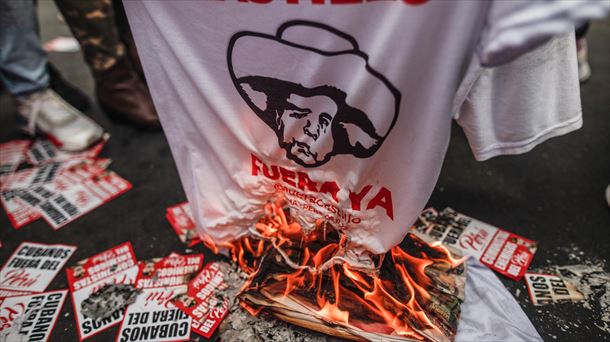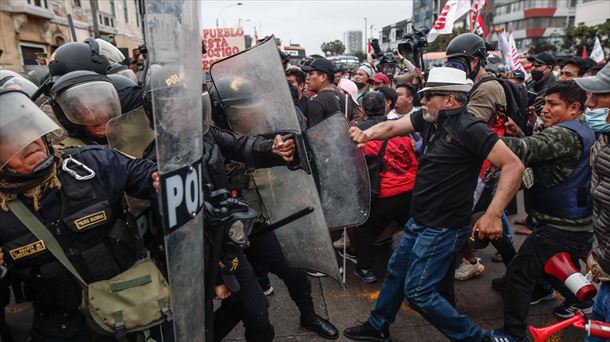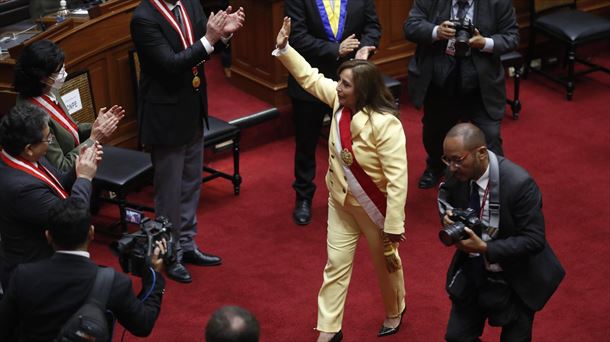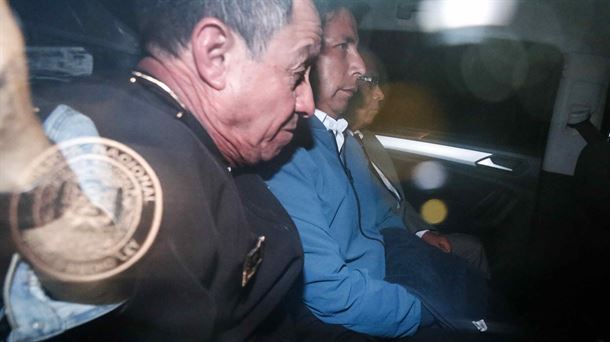We explain in detail the evolution of the coup d’état in Peru on Wednesday, December 7, from Pedro Castillo announcing the emergency government to the appointment of the new president Dina Boluarte.
The citizens of Peru have lived this December 7th a day that is already part of the country’s history, the day of the coup by President Pedro Castillo, thus attempting his resignation from parliament. Below we describe the development of events, from Castillo’s announcement of the emergency government to the nomination of Dina Boluarte as Peru’s first president.
Message to the Nation: State of Emergency
the afternoon of Wednesday 7 Dechours before the Peruvian parliament debated a motion to remove him (the third), the president Pedro Castillo addresses the nation to announce dissolution and closure of Congress and calling new elections. “In response to the claim of citizens across the country, we have decided to establish an emergency government aimed at establishing the rule of law and democracy.” Sets a curfew between 10 PM and 4 AM
Journalists and delegates remain in Congress. EFE
Internal complaints and dismissal
After the president’s announcement Congressmen from several banks denounce Castillo’s coup. Peru’s vice president, Dina Boluarte, has denounced that the closing of Congress and the formation of an emergency government, dictated by President Pedro Castillo, constitutes a “coup”. Peruvian opposition leader Keiko Fujimori – leader of the Fuerza Popular party and daughter of former President Alberto Fujimori, who staged a 1992 coup – accuses Castillo of carrying out a “desperate coup” and urges Congress to to dismiss military forces to “support the constitutional order.”

Congress President Jose Williams Zapata. EFE
Peru’s representative to the Organization of American States (OAS), Harold Forsyth, is stepping down because he “cannot have any connection, for moral and professional reasons, with a regime that operates by decree.” Likewise, Pedro Castillo’s lawyer steps down to defend the president whereas there has been “a rupture of the constitutional order” in the Andean country. Betsy ChavezPresident of the Council of Ministers resigns.
The armed forces jump out
The doors of the “Rafael Hoyos Rubio” barracks in the Rimac district of Lima, where the armored division of the Peruvian army and tanks are located, have been closed. The Armed Forces and Police of Peru announce that “will not stay” acts contrary to the constitutional order.
Castillo leaves the government palace with his family.
Citizens take to the streets
Defenders and opponents of Pedro Castillo take to the streets and there are clashes.

Protests against Castillo. EFE

Defenders of Castillo confront the police. EFE
international response
Latin American leaders (Argentina, Colombia, Ecuador, Brazil, Mexico, Uruguay) expressed concern over the events and called for democratic institutions and constitutional order to be safeguarded.
The US rejects Castillo’s “extra-constitutional act”, and Spain condemns the “breach of the constitutional order”.
Bolivian President Luis Arce condemns “intimidation by the elite” against “people’s governments”. “From the beginning, the Peruvian right has sought to overthrow a government democratically elected by the people, by the humble classes striving for greater inclusion and social justice,” the Bolivian president criticized.
Castillo’s removal and detention
The plenary session of the Peruvian Congress fires the country’s president, Pedro Castillofor “permanent moral incompetence” by 101 votes out of a total of 130, citing Vice President Dina Boluarte, who will be sworn in as the new head of state.

Deputies celebrate Castillo’s resignation. EFE
The The Public Prosecution Service arrests for alleged crimes of rebellion and conspiracy the already deposed president of Peru, Pedro Castillo, at the headquarters of the prefecture of Lima, where he had gone with his family and former Prime Minister Aníbal Torres after announcing that he would dissolve Congress, declare an emergency government and call new parliamentary elections unsubscribe.

Pedro Castillo, detained in the prefecture of Lima. EFE
Dina Boluarte, new president
The left lawyer Dina Boluarte is sworn in as the first female president of Peru’s history. He calls on all political forces to a ceasefire and to “national unity” and pledges to fight “for the no-ones and the excluded”. With the new appointment, President of the Peruvian Congress, José Williams, believes that “democratic and constitutional order has been restored” in Peru.

Dina Boluarte, after being named president. EFE
The Constitutional Court of Peru clarifies that the curfew promulgated before President Pedro Castillo was impeached by the Peruvian Congress “unconstitutional”so it has no legal effect.
Preventive Prison
Deposed Peruvian President Pedro Castillo was transferred Wednesday evening to Barbadillo Prison, in Lima’s Ate district, where he will remain for 48 hours, and where former President Alberto Fuijimori is also being held, who is serving his 25-year sentence. jail.

Pedro Castillo, arrested. EFE
(function(d, s, id) {
var js, fjs = d.getElementsByTagName(s)[0];
if (d.getElementById(id)) return;
js = d.createElement(s); js.id = id;
js.src = “//connect.facebook.net/es_ES/sdk.js#xfbml=1&version=v2.8”;
fjs.parentNode.insertBefore(js, fjs);
}(document, ‘script’, ‘facebook-jssdk’));
Source: EITB
I’m Wayne Wickman, a professional journalist and author for Today Times Live. My specialty is covering global news and current events, offering readers a unique perspective on the world’s most pressing issues. I’m passionate about storytelling and helping people stay informed on the goings-on of our planet.



